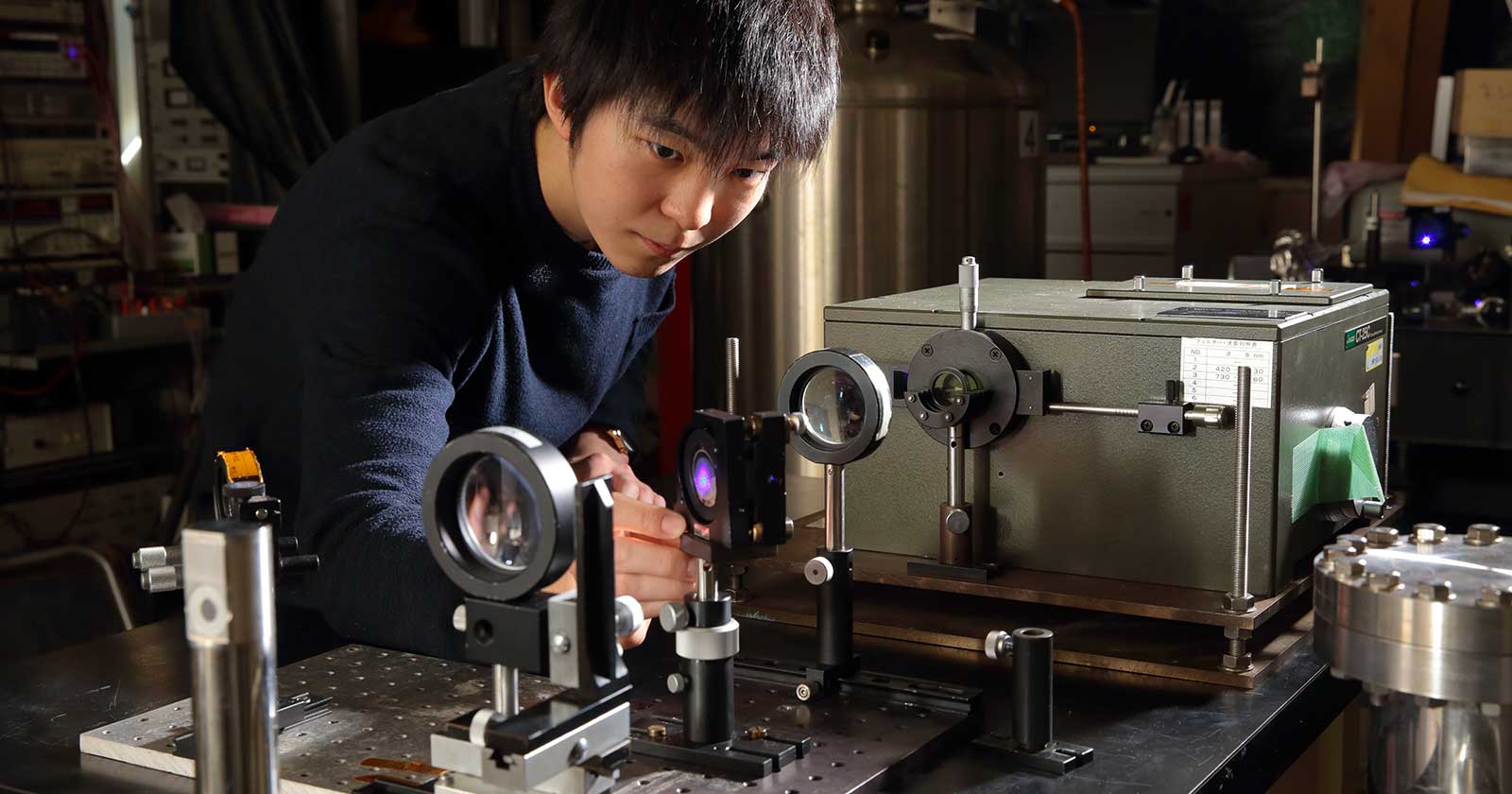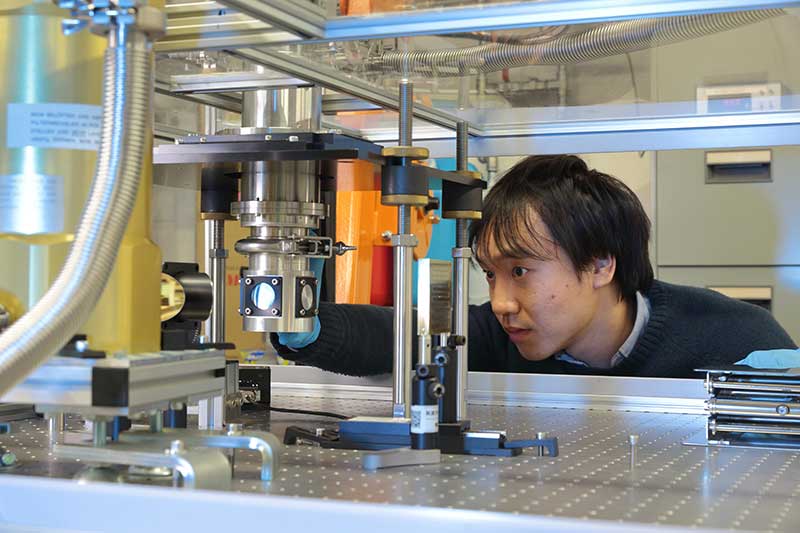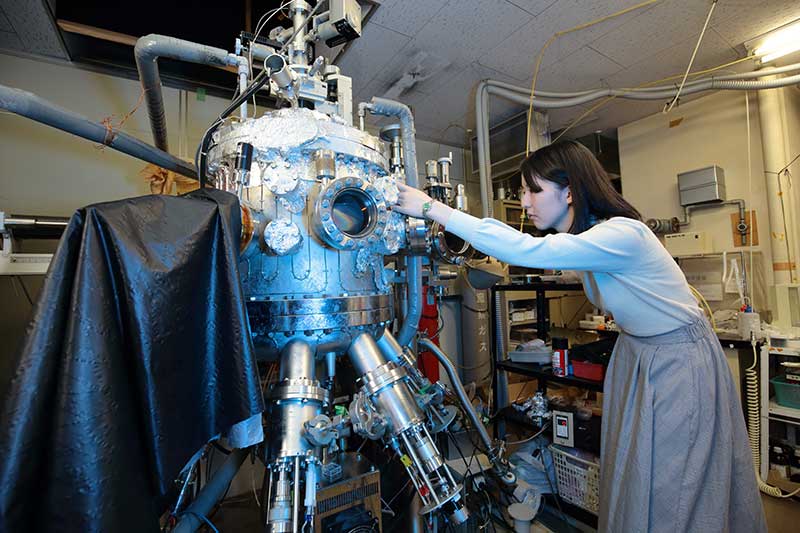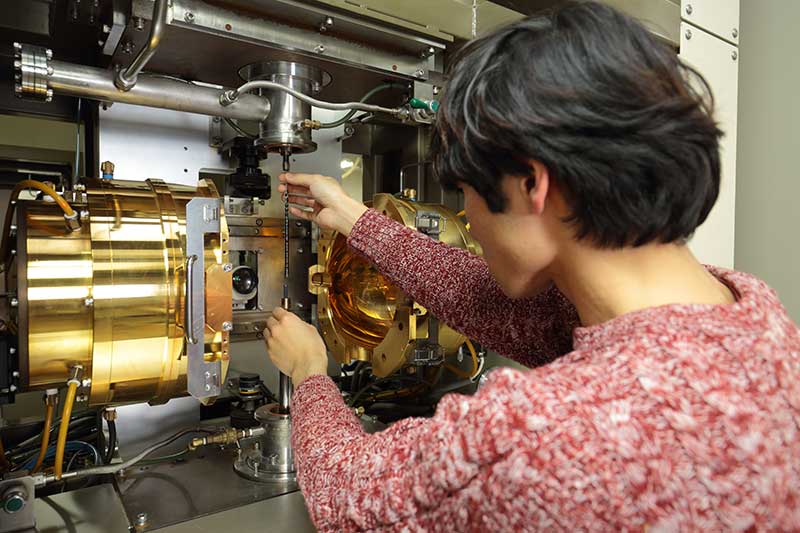
Summary
The Department of Materials Science and Engineering aims to understand the microscopic properties of materials (physical properties) from the viewpoint of physics and to develop this knowledge into technologies that are useful in the real world.
Industrial products such as computers, automobiles, telecommunications equipment, and solar cells incorporate numerous elements such as transistors, memory, semiconductor lasers, and shape memory devices. These elements are made of metals, semiconductors, insulators, magnetic materials, and other materials, and their functions are skillfully utilized. In order to make our society more affluent and sustainable, there is a strong need not only to enhance the functionality of existing elements but also to create new elements and technologies that are environmentally conscious.
In order to pioneer the functions of materials that will form the basis for innovative elements and technologies that answer these needs, it is necessary to target a wide range of materials, including superconductors, metals, semiconductors, insulators, and magnetic materials, and to gain a deep understanding of their properties from the perspective of cutting-edge physics.
The educational objective of the Department of Materials Science and Engineering is to develop human resources capable of extracting innovative functions from materials that will support future technologies and develop them into new technologies.



Introduction of Laboratory
| Laboratory Name | Faculty Name | Research |
| Theory of Photophysical Properties Lab(Hino・Maejima Lab) | Prof. Kenichi Hino Lecturer Nobuya Maejima | Theoretical study of novel physical phenomena induced by the interaction of light and matter (semiconductor nanostructures, molecular crystals, etc.). In particular, control of material phases and ultrafast dynamics by laser light |
| Solid State Photophysical Engineering Laboratory(Matsuishi Lab) | Prof. Kiyoto Matsuishi | Research and application of physical properties of semiconductor-related materials using light. In particular, research on light-induced phenomena, structural changes, and properties under ultrahigh pressure in nanostructures and other materials, and development of new photo-functional materials. |
| Research Laboratory of Material Histology(Kizuka Lab) | Prof. Tokushi Kizuka | We use electron microscopy to study the microstructure and properties of metals, ceramics, semiconductors, and composite materials. We are developing heat-resistant alloys, thermal barrier ceramics, high-density mounting fine metal wiring, CFRP, etc. |
| Spintronics Lab(Kuroda・Kanazawa Lab) | Prof. Shinji Kuroda Assistant Prof. Ken Kanazawa | Research aimed at creating new electronics (spintronics) using the spin of electrons. Exploration and physical properties research of new semiconductor materials with embedded atomic magnets. |
| Organic Semiconductor Materials Science and Engineering Laboratory (Marumoto・Yamaguchi Lab) | Prof. Kazuhiro Marumoto Assistant Prof. Seira Yamaguchi | Development of new functional materials, research on their physical properties, and research on their application to devices. In particular, development of organic semiconductor devices using conductive polymers, etc., and evaluation and control of their physical properties. |
| Physical Science Theory Laboratory (Shugo Suzuki Lab) | Associate Prof. Shugo Suzuki | Theoretical analysis of the structure and electronic state of materials and theoretical exploration of new functional materials by high-precision calculations. In particular, theoretical study of magnetic and optical properties of thin films. |
| Functional Metallic Materials Laboratory (Kim・Tasaki Laboratory) | Prof. Heeyoung Kim Assistant Prof. Wataru Tasaki | Development of shape memory alloys (Ti-Ni alloys, shape memory thin films, micro actuator elements, biomaterials) and research on physical properties (phase transformation, shape memory effect, superelasticity) |
| Nanomaterials Research Lab (Tanimoto Lab) | Associate Prof. Hisanori Tanimoto | We are studying the fabrication and physical properties of materials with novel structures and properties, focusing on metallic nanostructured materials (amorphous alloys, ultrafine particles, etc.) with controlled atomic arrangement on the 10-9m scale. |
| Inorganic Energy and Environmental Materials Lab (Yoshikazu Suzuki Lab) | Associate Prof. Yoshikazu Suzuki | We are developing new inorganic materials (fine ceramics) for energy and environmental applications such as nanomaterials for solar cells and diesel particle removal filters. |
| Solid State Quantum Physics Lab (Fujioka Lab) | Associate Prof. Atsushi Fujioka | Development of new strongly correlated and topological materials and research on electronic, optical and thermal properties. We challenge to develop new quantum properties and functionalities by making full use of advanced material synthesis, fundamental physical properties measurements, and high-value measurements. |
| Iron and Steel Materials Lab(Koyano Lab) | Associate Prof. Tamotsu Koyano | We are conducting basic research on the quenching (martensitic transformation) and magnetic properties of nitrogen steel, a rust-free iron that is not allergic to nickel, and on manufacturing methods. |
| Crystal Physics Lab(Takahashi Lab) | Lecturer Miwako Takahashi | This laboratory uses quantum beams (neutron beams, X-rays, electron beams, etc.) to study the local structure and phase transitions of alloys and compounds, and aims to elucidate the unique physical phenomena exhibited by these materials from a structural standpoint. |
| Organic-Inorganic Hybrid Materials Innovation Laboratory (Jung Lab) | Associate Prof. Jung Mincherl | We are studying the analysis of defects, phonon dispersion, and electronic structure of organic/inorganic hybrid materials and their application to terahertz sensing, modulation, and imaging devices. |
| Solid State Conductivity and Photophysics Lab (Minami Lab) | Lecturer Hidetoshi Minami | Development of terahertz (THz) wave oscillation devices using high-temperature superconductors (in collaboration with Kashiwagi and Tsujimoto labs) and research on optical properties of terahertz wave related materials and electrical conduction in dielectric materials. |
| Laboratory for Molecular Theory of Quantum Physical Properties (Koizumi Lab) | Associate Prof. Hiroyasu Koizumi | Theoretical research to elucidate the superconducting mechanism of high-Tc cuprate superconductors and to develop materials that exhibit superconductivity at room temperature. Also, theoretical research for the realization of a quantum computer using copper oxide high-temperature superconductors. |
| Laboratory of Superconducting Physical Engineering (Kashiwagi Lab) | Lecturer Takanari Kashiwagi | Exploration of new high-temperature superconductors and elucidation of physical phenomena of high-temperature superconductivity by growing single crystals and measuring physical properties using nanotechnology, etc. |
